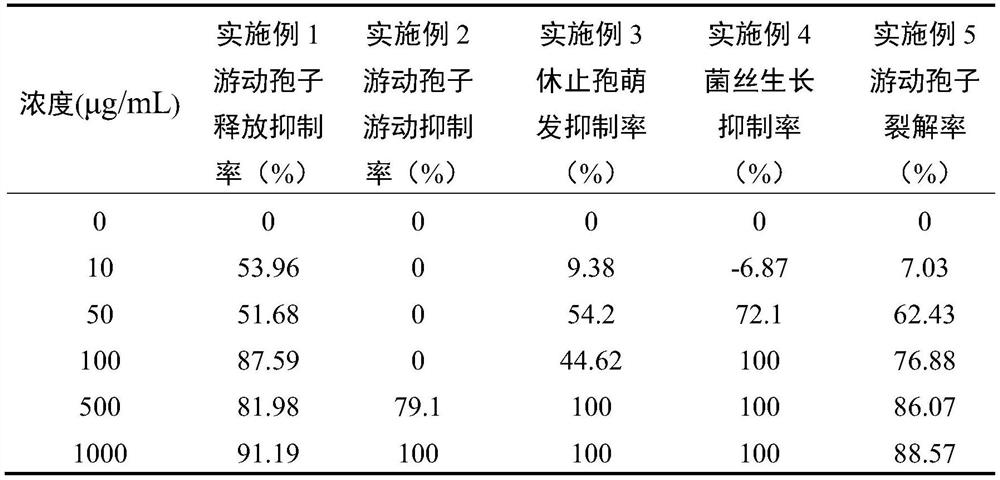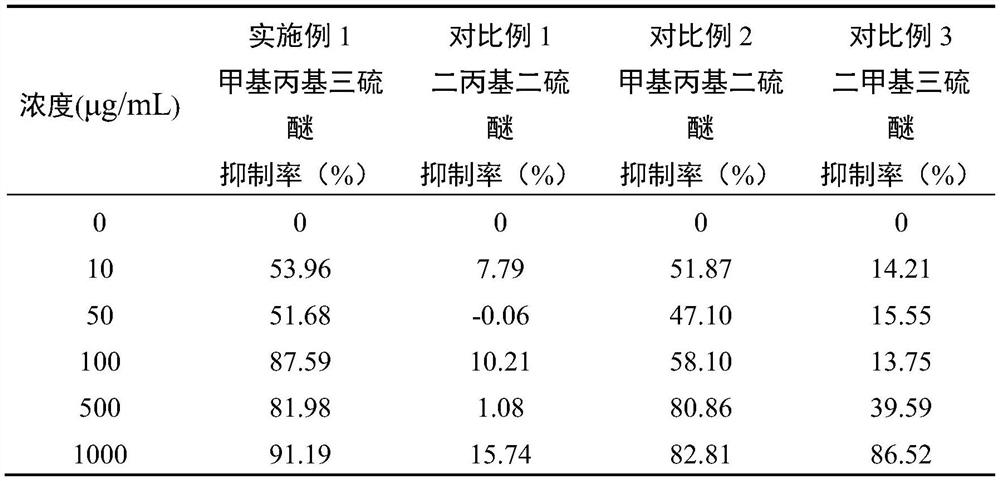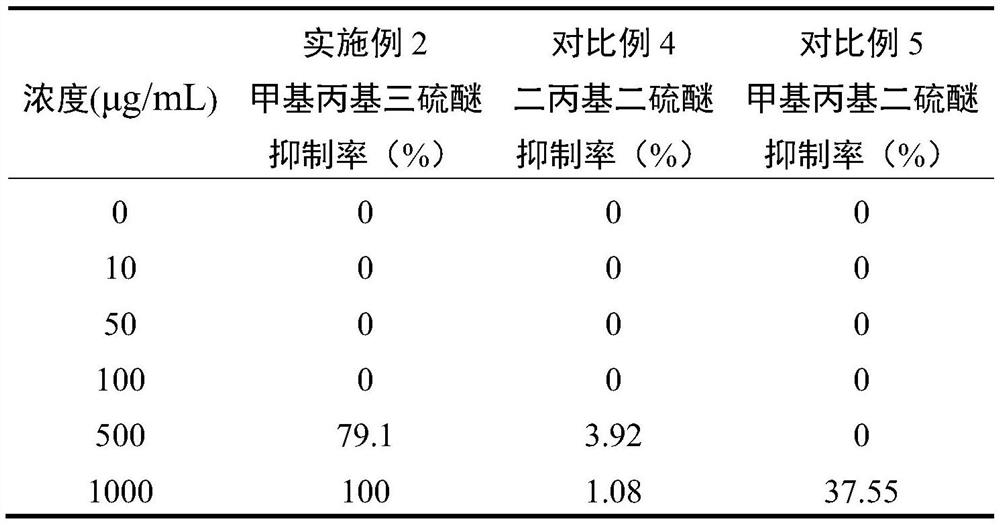New application of thioether compound methyl propyl trisulfide to inhibit Phytophthora
A technology of methyl propyl trisulfide and Phytophthora capsici, applied in application, bactericide, biocide, etc., can solve problems such as environmental damage, Phytophthora drug resistance, etc. Prominent effect of suppression effect
- Summary
- Abstract
- Description
- Claims
- Application Information
AI Technical Summary
Problems solved by technology
Method used
Image
Examples
preparation example Construction
[0055] (2) Preparation of sporangia suspension: Scrape the mycelium of Phytophthora capsici from the medium cultured for 7 days with a cover glass, and rinse with sterile water into a cryopreservation tube blocked by a layer of gauze. Use a hemocytometer to adjust the concentration of the sporangia suspension to 1 x 10 4 individual / mL.
[0056] (3) Preparation of zoospore suspension: add 15ml of sterilized ddH to the culture dish for 7 days 2 O, placed in a refrigerator at 4°C for cold stimulation for 30 minutes, then allowed to stand under light at 25°C for 30 minutes, and then began to release zoospores, which were counted with a hemocytometer and diluted to make a concentration of 2×10 5 individual / mL zoospore suspension.
[0057] (4) Preparation of teleugen suspension: add 15ml of sterilized ddH to the culture dish for 7 days 2 O, placed in a refrigerator at 4°C for cold stimulation for 30 minutes, then allowed to stand under light at 25°C for 30 minutes, and then began...
Embodiment 1
[0059] Embodiment 1 The influence of methyl propyl trisulfide on the release of Phytophthora capsici zoospores
[0060] ①The preparation concentration is 1×10 4 Individual / mL Phytophthora capsici sporangia suspension;
[0061] ② Use a pipette to draw 40 μL of zoospore suspension into the groove of the concave glass slide, add 10 μL of 6 different concentrations of methyl propyl trisulfide aqueous solution, so that the final concentration of methyl propyl trisulfide is 0 μg / mL, 10μg / mL, 50μg / mL, 100μg / mL, 500μg / mL, 1000μg / mL. Place the concave glass slide on the stage of the microscope, find the zoospores with a 4x objective lens, and observe with a 10x objective lens. Count the spore release rate at 0 min, 20 min, and 40 min, and calculate the release inhibition rate. Release inhibition rate (%)=(control release rate-treatment release rate) / control release rate×100%.
[0062] The experimental results show:
[0063] When the concentration of methyl propyl trisulfide is 10...
Embodiment 2
[0064] The impact of embodiment 2 methyl propyl trisulfide on zoospore movement of Phytophthora capsici
[0065] ①The preparation concentration is 2×10 5 Individual / mL Phytophthora capsici zoospore suspension;
[0066] ② Use a pipette to draw 40 μL of zoospore suspension into the groove of the concave glass slide, and add 10 μL of 6 different concentrations of methyl propyl trisulfide aqueous solution, so that the final concentrations of methyl propyl trisulfide are respectively 0μg / mL, 10μg / mL, 50μg / mL, 100μg / mL, 500μg / mL, 1000μg / mL;
[0067] ③Under the microscope, count the cessation rate of zoospores after adding methyl propyl trisulfide for 40 minutes, and calculate the average value of the cessation rate. Stopping rate (%)=number of telospores / (number of telospores+number of zoospores)×100%. (ie motility inhibition rate).
[0068] The experimental results show:
[0069] When the concentration of methyl propyl trisulfide was 500 μg / mL, the inhibitory effect on the swi...
PUM
 Login to View More
Login to View More Abstract
Description
Claims
Application Information
 Login to View More
Login to View More - R&D
- Intellectual Property
- Life Sciences
- Materials
- Tech Scout
- Unparalleled Data Quality
- Higher Quality Content
- 60% Fewer Hallucinations
Browse by: Latest US Patents, China's latest patents, Technical Efficacy Thesaurus, Application Domain, Technology Topic, Popular Technical Reports.
© 2025 PatSnap. All rights reserved.Legal|Privacy policy|Modern Slavery Act Transparency Statement|Sitemap|About US| Contact US: help@patsnap.com



